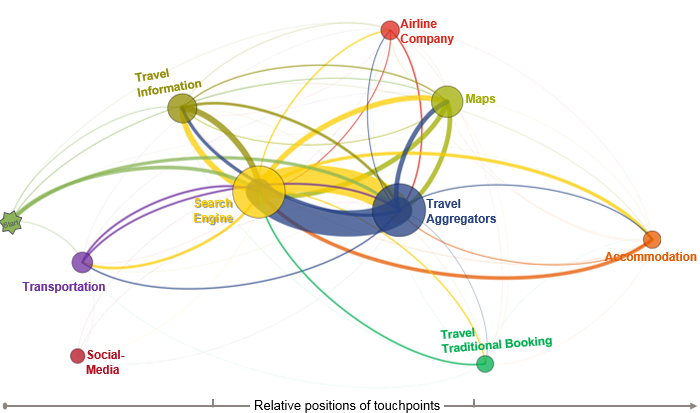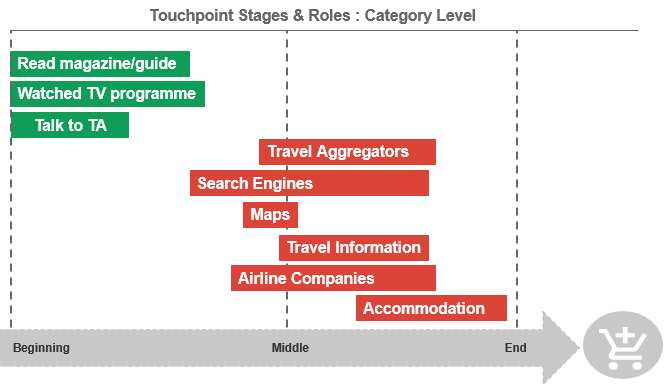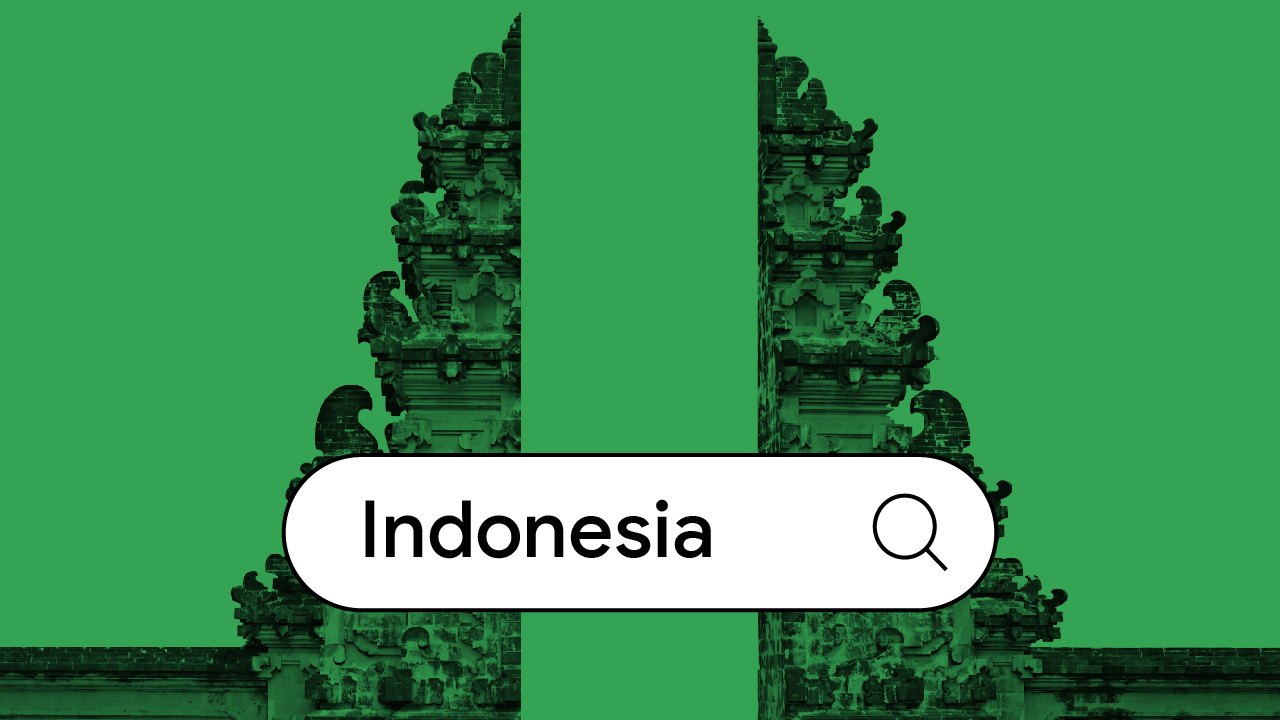Today's travel consumer journey is complex. It happens across devices and channels, and the path to purchase is anything but linear. New research shows that one thing is clear: mobile is key. See how travel brands can win consumers by engaging them in the right moments, with the right content.
No doubt about it, Indonesia is mobile-first. There are now more mobile connections (308.2 M)1 than the nation’s population (255.5 M),1 and consumers are spending three hours or more per day1 on their mobile devices.
In this highly mobile market, it’s not surprising that 67% of Indonesians make purchases on their smartphones.2 And brands are just learning how to tap into this huge (and complex) market. Consumers switch seamlessly between multiple devices and channels, and criss-cross between the on- and offline worlds. That fluidity can make it difficult for brands to estimate the value of mobile users, especially for products with longer purchase cycles, such as leisure travel accommodations.
To help brands assess the value of mobile users, we teamed up with GfK to conduct a study on the smartphone habits of 471 Indonesian travelers. Then, in partnership with Kadence International, we dug deeper and conducted in-depth focus groups to provide us with a deeper understanding of Indonesian travelers’ mobile behaviors.

For travel booking, consumers turn to mobile
Smartphones aren’t a secondary device for travel searches; more than 60% of travel/accommodation searches in Indonesia are done on smartphones.3
Conventional wisdom may assume consumers would conduct travel research on their smartphones and then switch to desktop to actually make the purchase. New research, however, reveals otherwise. Sixty percent of travelers purchased their accommodation online and a full 71% completed their booking on a smartphone.4 This is more than the number of people who purchase offline, and three times the number of people who purchase on a desktop.4

Not all booking sites will see such a high percentage of mobile conversions though. A majority of smartphone bookings—91% to be exact—were made on travel aggregators such as Agoda.com and Traveloka.com.4 Online travel aggregators also enjoy a healthy reach on mobile (29% reach and 52% of consumers’ time spent), while travel suppliers like airlines and hotels see very low reach and time spent, each below 5%.4 And it’s no surprise. Our research shows that the services, functionalities, and overall experience these aggregator sites offer are not only conducive to booking, but also match consumers’ wants and needs.4
A key factor that impacts online purchase behavior are the available payment options.4 Indonesia’s credit card penetration is surprisingly low: only 3% of the population owns a credit card.5 The preferred method of payment is thus bank transfer, which is perceived to be a safer mode of payment, despite the increased time it takes to complete a transaction.6This is reflected in our research: when respondents reached the payment page, they indicated that they didn’t want to provide their credit card details.6
For travelers, usability, security, and connectivity are the top barriers to completing a transaction on a smartphone.6 Given that their Internet connection might drop at any moment, they felt that submitting credit card details on a smartphone was too risky.6 And if trustworthy payment options aren’t available, our respondents said they’d move away from the site, likely to another service provider that can better cater to their needs.6
Usability, security, and connectivity are the top consumer barriers to completing a transaction on a smartphone.
Mobile search, the modern travel agent
Gone are the days of making an appointment to see a travel agent who can take patient travelers through their options. Mobile search has now taken over as the modern-day travelers’ always-on, always-there travel agent. Once their interest is piqued, Indonesian travelers turn right to Google or YouTube to search for additional destination info. (YouTube is the world’s 2nd largest search engine, after all!) Once the planning process starts, Google is the springboard to every search thereafter.4
Based on our behavioral study with GfK, we mapped the network of online pathways that consumers navigate throughout their consumer journeys. In the map below, each node is a touchpoint, with the size of the bubble representing reach.

On this map, roughly 36% of people use search as their starting point on the smartphone.4 Users generally kick off their research by visiting search engines and travel aggregators, and then bounce back and forth between the two. Once they’ve shortlisted or settled on a destination, they move on to services like Google Maps and specific websites, and they start looking into accommodations.
We also looked at how consumers use on- and offline touch points throughout the journey. Our study revealed that in the beginning, offline touch points feature more prominently, mainly to trigger interest or inspiration.4 Halfway through their path to purchase, travelers typically turn to the web and stay there to the end.4 Travelers tend to visit travel aggregator and airline sites first, and then move to accommodation sites.4

Search engines overlap much of their journey.4 More than merely a point of entry, search is the medium that connects all channels throughout the path to purchase. And as they’re conducting their travel research, respondents used generic keywords such as “hotel”, “comfortable hotel”, or ”cheap hotel”.4 Marketers should take note to include the appropriate generic keywords in their campaigns, in order to be well-positioned on search results pages.

Mobile inspires travel experiences
Even in our digital era, word of mouth is still a significant source of influence and inspiration.6 A casual lunchtime discussion about a colleague’s Italian summer vacation can be all that’s needed to trigger that wanderlust. Now, these conversations also happen online, in places like social media networks and messenger apps.
Mobile has become a social connector for both on- and offline conversations with friends. It’s a key platform for inspiration and information, as people browse through photos and stories on social media, websites, or messenger apps. Eye-catching photos and videos easily trigger off active searches for more information about a destination.
Once travelers set out on their voyages, smartphones remain just as important. Travelers used to pack guidebooks, travel tips, and dictionaries. Now, they can grab just their smartphones and go. While on the road, searching for food and locations (via maps) is the second most common use of smartphones (next to sharing travel experiences).6 Along the way, travelers can find what they need and share snapshots with friends and family, inspiring them to go on their own trips. And so the cycle of wanderlust continues.
Building a winning brand strategy on mobile
Mobile offers brands a tremendous opportunity to engage and influence consumers. Winning consumers is all about being present in those critical moments where customers are looking for inspiration and information, and as we’ve seen, these crucial moments are happening on mobile.
Consider how your brand can be there and meet consumers’ needs with some of these tactics and strategies:
- Be the source of inspiration. Moments of inspiration are happening all the time on mobile—the spark can occur anywhere and everywhere. Be where your consumers are and offer content that will generate ideas.
- Be there when consumers are searching for information. Search on mobile is happening throughout the purchase journey, so make sure your brand is present in those key moments of need. Think about what your consumers might be searching for and when. Meet them in those moments with relevant and helpful information that can guide them to purchase.
- Have a seamless mobile booking experience. Consumers are completing purchases more and more on mobile. Ensure your mobile site has the payment options consumers want, as usability and transaction security are major concerns for Indonesian consumers.
For more data that can inform your brand’s mobile strategy, check out below the full results from our behaviour-tracking study: Indonesia Hotel Booking Path to Purchase Study.








